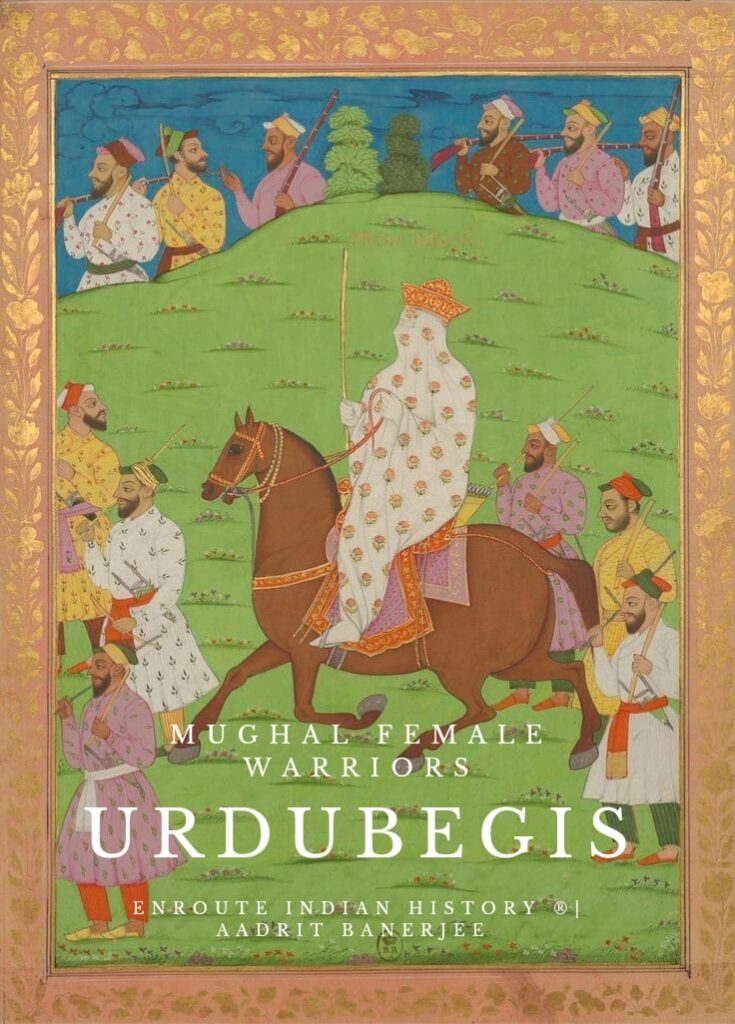The Urdubegis — Female Guards of the Zenana and the Mughal Emperor

Article Written By EIH Researcher And Writer
Aadrit Banerjee
When Babur, the first Mughal Emperor, arrived in 1526, and defeated Ibrahim Lodi to establish what was to become the famous Mughal Rule in India, his harem came with him. To ensure the protection of the women he created the Urdubegis. The Urdubegis were a group of armed women who were responsible for guarding the Mughal zenana & the emperor.
The mention of the Urdubegis have been found since the times of Emperor Babur and Humayun. They were trained in the use of long-range weapons such as bows and arrows, and spears, as well as short daggers and swords. These women fighters had to be trustworthy, loyal and dedicated for they guarded not just the queen, and rest of the harem, but also the king, specially ensuring his safety in his harem, the place where he spent the most time, where the male guards could never enter, and thus, where the emperor was the most vulnerable. They also guaranteed the safety and the security of the women when the harem moved along with the emperor at the time of travels and battle excursions.
Kishori Saran Lal, while speaking about the Urdubegis, writes in his book “The Mughal Harem” — “The Urdubegis of the Mughal court was so skillful in warfare, that during the war of succession, Aurangzeb rejected to visit Shah Jahan because he feared the female armed guard would murder him”. While, in 1719 Farrukhsiyar, the 10th Mughal Emperor, hid in his harem fearing for his life when Ajit Singh of Marwar attacked the place to depose the Emperor. The armed guard of the palace then readied themselves for battle but the king couldn’t ultimately be saved.
However, at a time when all the Mughal women were sequestered behind the purdah, this clan of warrior women had to willingly sacrifice the veil to perform their responsibilities, or they had to be drawn from tribes which did not practice the purdah. These women usually came from the Habshi, Tartar, Turk and Kashmiri tribal groups. The Kashmiri women were particularly selected because they did not follow the norm of the purdah.
Even though, there were many such valiant women, yet we know only the name of one such Urdubegi: Bibi Fatima, who served as the wet-nurse for Emperor Humayun, and later was promoted to the chief of the Urdubegis by Akbar, recognising her long, selfless and devoted service to his father till the time of his death. Her name, and an instance related to her daughter’s unfortunate murder could be found in the Humayan-Nama written by Gulbadan Begum, Humayun’s half sister. That her tale featured in the biography, many speculate, was because it was written by a woman.
This group of dedicated, loyal and trained female warriors, about whom so little is known, formed a part of the complex character & administration of the zenana. The position of the Urdubegis, their status and legacy weakened after the British arrived and the Mughals were wiped out of the socio-political scene. Their narratives were erased in orientalist, erotic depictions of the harem which came to be seen largely as a sexual playground for the Mughal emperor.
References:
- Lal, K.S. The Mughal Harem. Aditya Prakashan, 1988, pp. 14, 52–55.
- Misra, Rekha. Women in Mughal India (1526–1748). Munshiram Manoharlal, 1967.
- Hambly, Gavin. “Armed Women Retainers in the Zenanas of Indo-Muslim Rulers: The case of Bibi Fatima”. Women in the medieval Islamic world : Power, patronage, and piety. Martin’s Press, 1998.
- Tauseef, Khadija. “Urdubegis: The Forgotten Female Fighters of the Mughal Empire”. Ancient Origins: Reconstructing the Story of Humanity’s Past, 20 Jun. 2022, ancient-origins.net/history-famous-people/urdubegis-0016920.



















